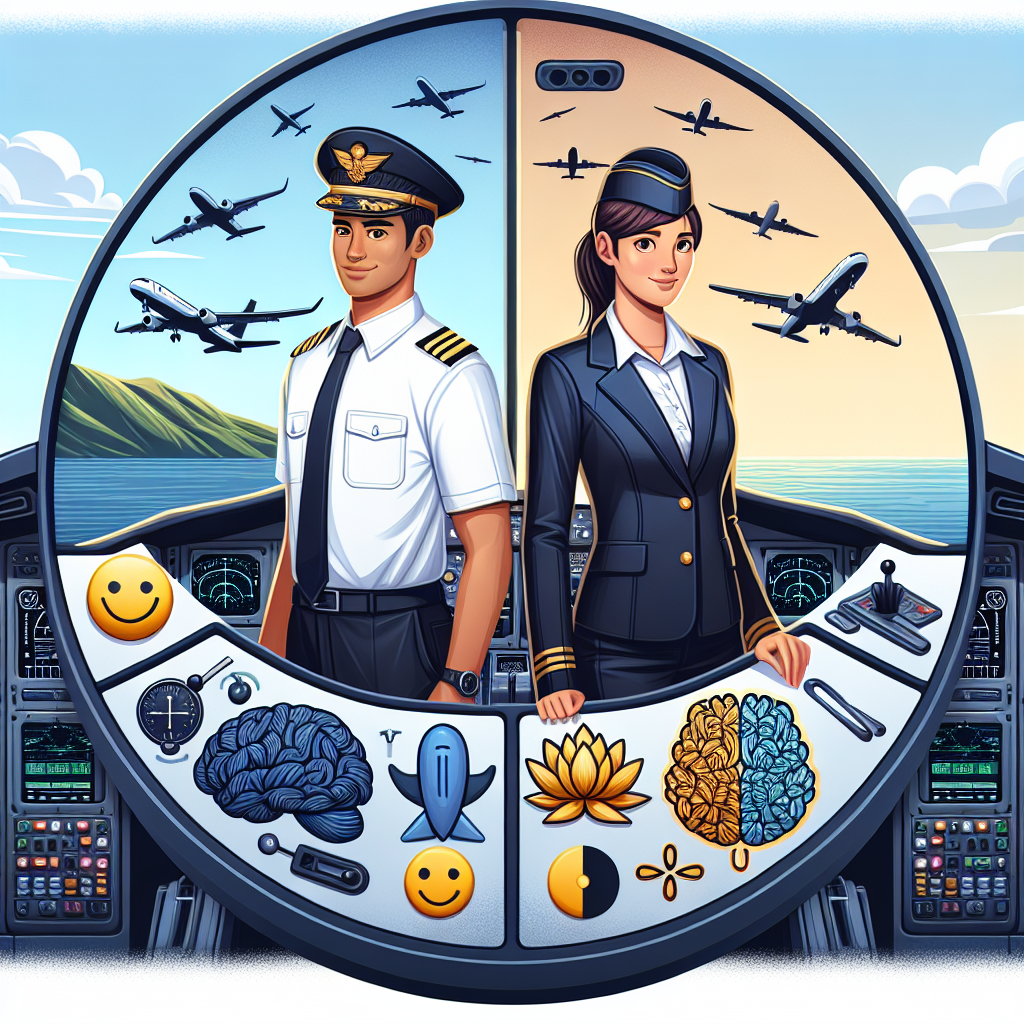
Introduction
In an industry where precision, focus, and decision-making are paramount, mental wellness stands as a critical pillar for not just the individuals involved, but for the safety and success of civil aviation as a whole. The skies can be unpredictable, but when it comes to the mental health of pilots and crew, proactive management can lead to powerful outcomes. The topic of Civil Aviation and Mental Wellness: Strategies for Pilots and Crew has never been more relevant, especially in today’s increasingly demanding flight environments. This article delves into effective strategies, real-world applications, and essential practices tailored for those navigating the clouds.
Understanding the Mental Health Landscape in Aviation
The Toll of High Stress
Pilots and crew members are routinely exposed to high-stress situations, which can lead to a range of mental health challenges, from anxiety and depression to chronic fatigue. Statistics reveal that approximately 1 in 4 pilots has experienced some form of psychological distress. Understanding the underlying factors contributing to mental health issues is essential for both organizations and individuals.
The Role of Aeromedical Factors
Aeromedical conditions such as hypoxia, dehydration, and long-haul fatigue can exacerbate mental wellness issues. Acknowledging and addressing these factors is not just advantageous; it’s vital for ensuring optimal performance in a challenging profession.
Strategies for Maintaining Mental Wellness
1. Building a Supportive Culture
Importance of Community
Creating a supportive environment among pilots and crew members is crucial. Establishing peer support programs can significantly enhance mental wellness. Communal sharing can act as a buffer against the stresses of aviation work.
Case Study: The Open Cockpit Initiative
In 2021, a major airline launched the Open Cockpit Initiative, allowing crew members to freely discuss mental health challenges in a safe space. This program led to a remarkable 30% reduction in reported stress levels within six months. Pilots reported feeling more connected and less isolated, underscoring the value of community engagement.
2. Stress Management Techniques
Practical Strategies
Teaching stress management techniques such as mindfulness, meditation, and deep-breathing exercises can have profound effects. These methods promote emotional resilience and cognitive flexibility, allowing pilots to process stress more effectively.
Table 1: Stress Management Techniques
| Technique | Benefits | Implementation |
|---|---|---|
| Mindfulness | Reduces anxiety, enhances focus | Daily practice for 10-15 minutes |
| Meditation | Promotes emotional regulation | Guided sessions or apps |
| Deep-breathing | Lowers heart rate, calms nerves | Before takeoff or during layovers |
3. Physical Wellness as Mental Wellness
The Connection
Physical activity is not just beneficial for the body; it directly correlates with better mental health. Regular exercise aids in the release of endorphins, reducing feelings of anxiety and depression.
Case Study: Healthy Pilot Program
One airline implemented a wellness program that included regular fitness classes and nutrition workshops. Over a year, they saw a 40% improvement in overall crew well-being, which translated to better performance and reduced sick leave.
4. Professional Training and Mental Health Awareness
Enhancing Preparedness
Training programs focused on mental health awareness equip pilots and crew members with the knowledge and tools to recognize signs of distress—both in themselves and in colleagues. This fosters a proactive rather than reactive approach to mental health.
Table 2: Training Topics for Mental Health Awareness
| Training Topic | Impact |
|---|---|
| Signs of Mental Distress | Early identification leads to quicker help |
| Resilience Training | Builds coping skills for stressful situations |
| Crisis Management Protocols | Provides a structured approach for emergencies |
Leveraging Technology for Mental Wellness
Digital Tools and Resources
The onset of technology has led to innovative approaches for mental wellness in civil aviation. Apps that track mood, provide wellness tips, and connect individuals to professional help can significantly enhance mental wellness accessibility.
Teletherapy and Remote Support
Teletherapy services allow pilots and crew to access mental health resources without the constraints of travel or scheduling conflicts, providing indispensable support during turbulent times.
Case Study: Cloud-Based Counseling Service
A new cloud-based counseling service for airline employees reported a 50% increase in utilization rates among pilots since its launch. This has resulted in higher engagement and reported satisfaction from users.
Navigating Regulations and Policies
Compliance with Aviation Standards
As mental health awareness grows, regulatory bodies are increasingly introducing guidelines to better equip pilots and crew members with mental wellness resources. Understanding and integrating these regulations into organizational practices is essential for compliance and effective support.
The Role of Human Factors
The incorporation of Human Factors training can improve not only individual mental wellness but also team dynamics. By focusing on interpersonal interactions and decision-making processes, organizations can foster a healthier work environment.
Conclusion: Empowering Pilots and Crew
Mental wellness in civil aviation is not merely a personal endeavor; it is a shared responsibility that involves organizations, regulators, and communities. By embracing Civil Aviation and Mental Wellness: Strategies for Pilots and Crew, stakeholders can cultivate healthier, happier, and more efficient professionals who are not only equipped to navigate the skies but also capable of facing the challenges that come their way.
Motivational Takeaway
As we navigate the path ahead, remember: investing in mental wellness is an investment in safety, performance, and success. Together, we can foster resilience in our skies.
FAQs
1. What are common mental health challenges faced by pilots?
Pilots often deal with anxiety, depression, chronic fatigue, and stress due to long hours, irregular schedules, and high-stakes environments.
2. How can crew members access mental health resources?
Many airlines now offer mental health support programs, teletherapy options, and wellness apps that provide instant access to resources.
3. What role do airlines play in promoting mental wellness?
Airlines can create supportive environments, provide training, and implement wellness programs that focus on physical and mental health.
4. How can I stay mentally fit during long flights?
Engaging in mindfulness practices, regular physical activity, and maintaining social connections can help combat fatigue and stress during prolonged flying hours.
5. Are there specific regulations regarding mental health in aviation?
Regulatory bodies like the FAA and EASA have introduced guidelines for mental health awareness and support for pilots and crew, emphasizing the importance of mental wellness in aviation safety.
By understanding and implementing Civil Aviation and Mental Wellness: Strategies for Pilots and Crew, we can not only improve individual lives but enhance the entire aviation industry, ensuring safer and more efficient skies for everyone.














